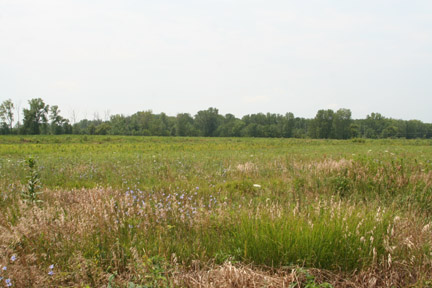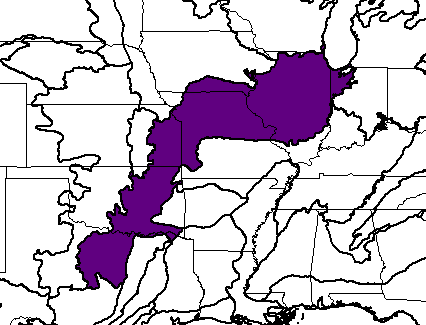
Mindewin National Tallgrass Prairie, Wilmington, Illinois (c) 2008 Steven J. Baskauf
Bioimages home (click on an image to enlarge)
view
this page in its intended navigation context
Central Forest/Grassland Transition Zone
(WWF
ecoregion
NA0804)

Mindewin National Tallgrass Prairie,
Wilmington, Illinois
(c) 2008 Steven J.
Baskauf

Source of bioregions data:
Olson, D. M. and
E. Dinerstein. The Global 200: Priority ecoregions for global conservation. (PDF
file) Annals of the Missouri Botanical Garden 89:125-126.
Distinctiveness (1=highest,4=lowest): 2
(regionally outstanding)
Due to its large size and position between the Great Plains and the eastern
deciduous forest, this ecoregion has one of the highest species richness in
North America. It is in the top ten ecoregions for reptiles, birds,
butterflies, and tree species.*
Conservation Status (1=most endangered, 5=most
intact): 1 (critical)
Less than 1% of the habitat is intact in small, fragmented blocks. Nearly
all is converted to corn and soybean production.*
 Carya
species
Carya
species Quercus
marilandica (blackjack oak)
Quercus
marilandica (blackjack oak) Quercus
s
Quercus
sAssociated habitats
Freshwater dunes, eastern shore of Lake Michigan, Indiana Dunes State Park, Indiana

dunes stabilized by Maram grass. (c) 2004
Maurice J. Kaufmann
hires
Ringgold Prairie, southern Iowa.


(c) 2005 Ron E.
VanNimwegen
* Ricketts, T.H., E. Dinerstein, D.M. Olson, C.J. Loucks, et al. (1999) Terrestrial Ecoregions of North America: A Conservation Assessment. World Wildlife Fund - United States and Canada. Island Press, Washington, D.C. pp. 301-302.
Except as noted, images copyright 2002-2004 Steve Baskauf - Terms of use